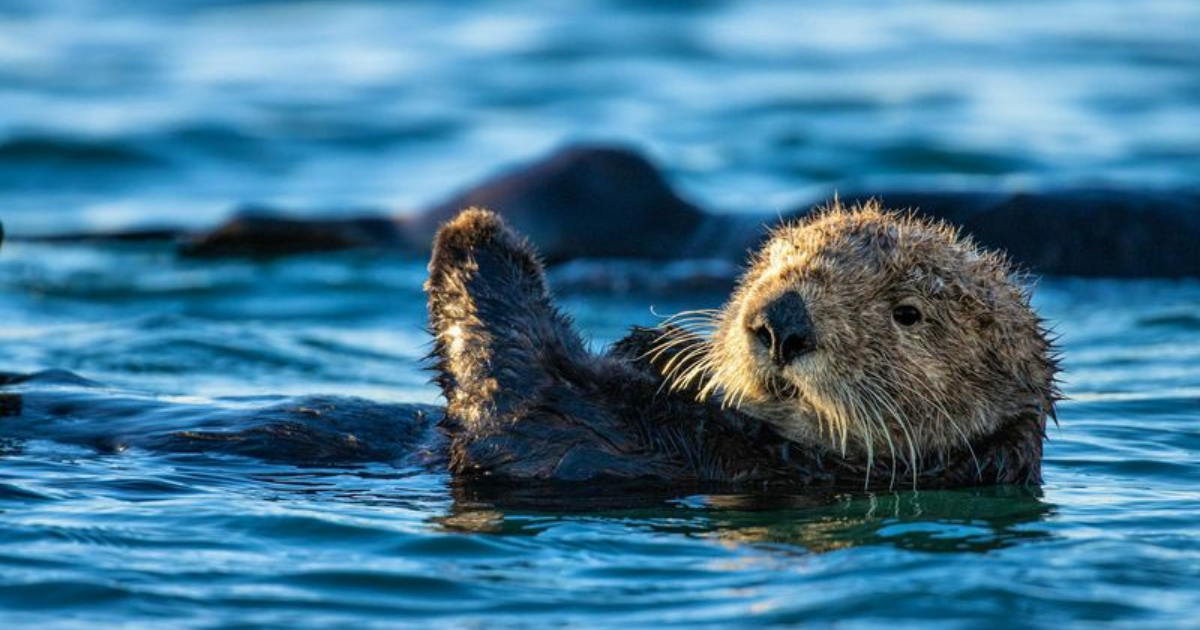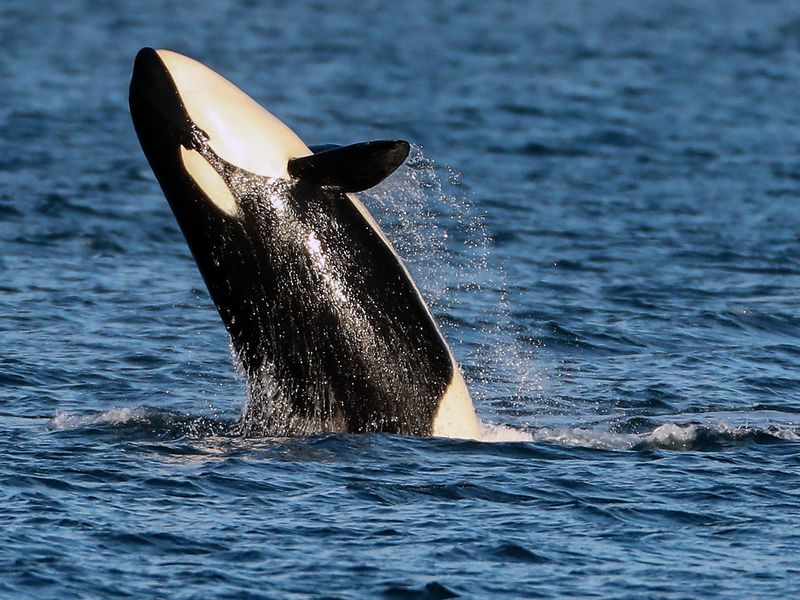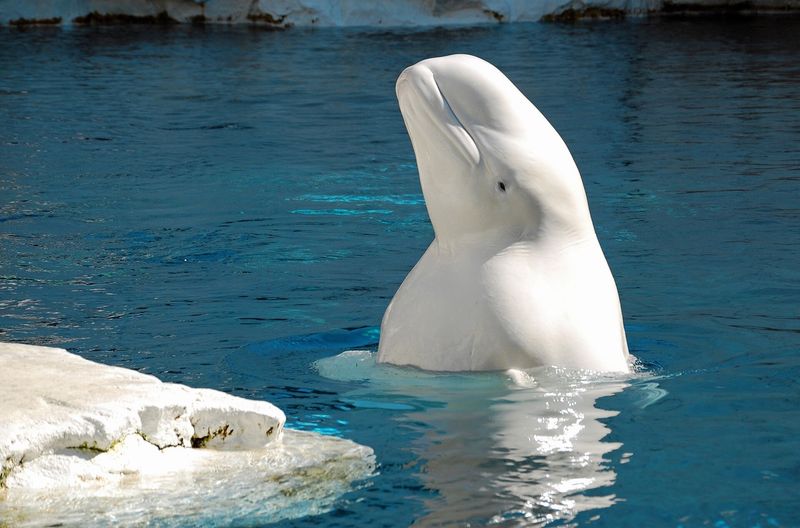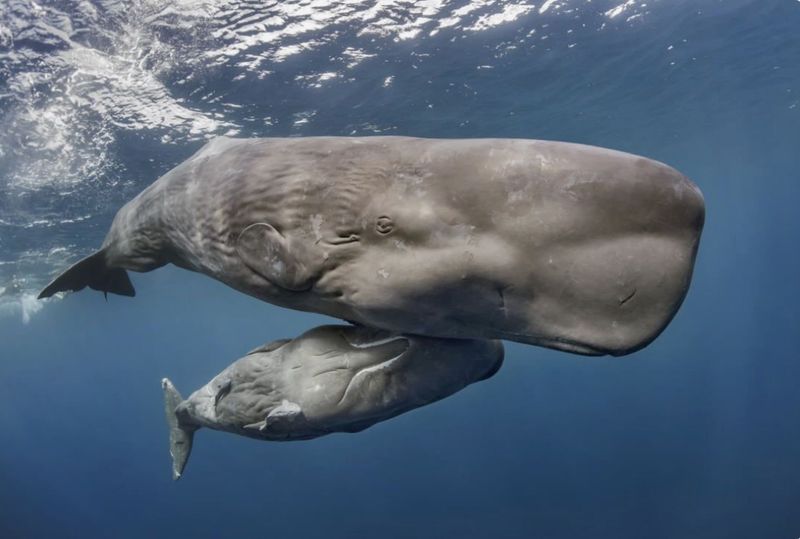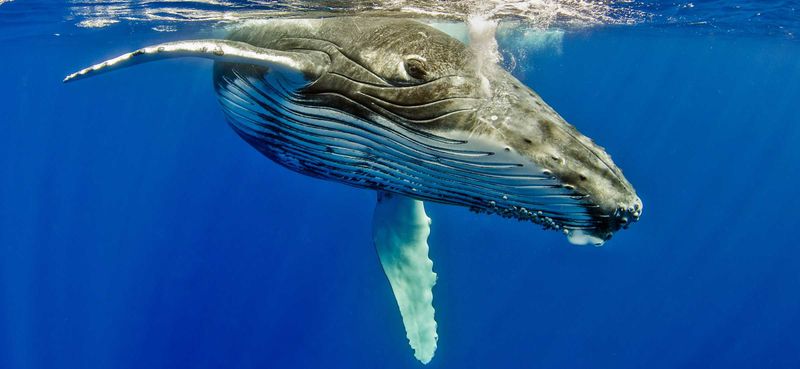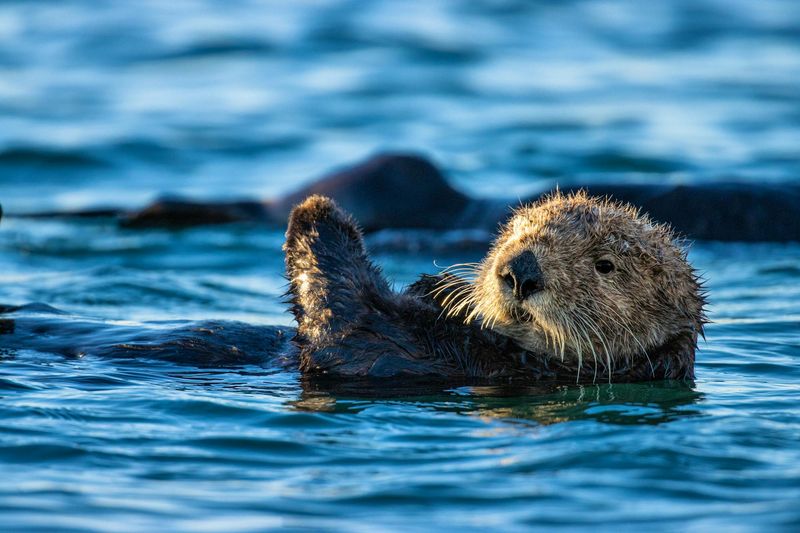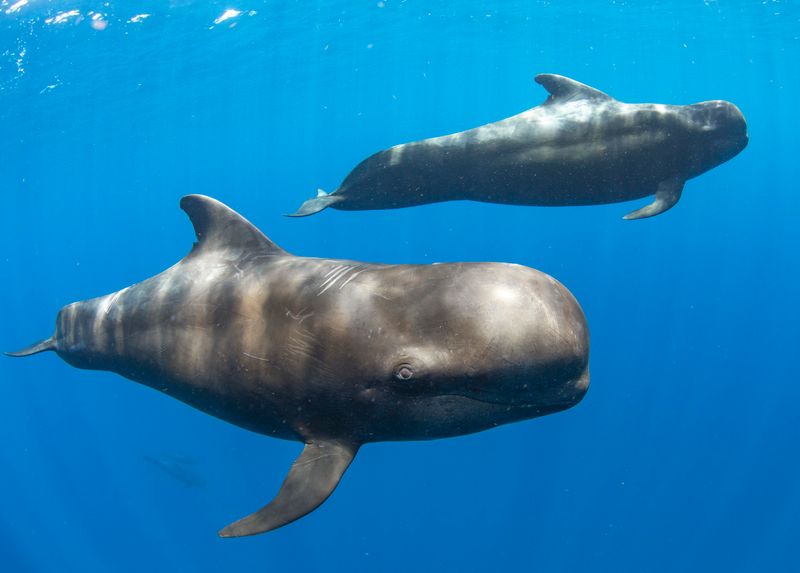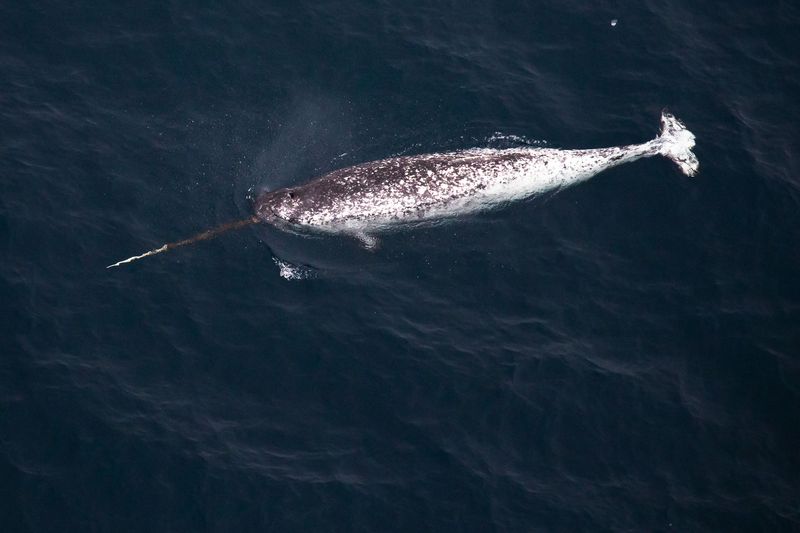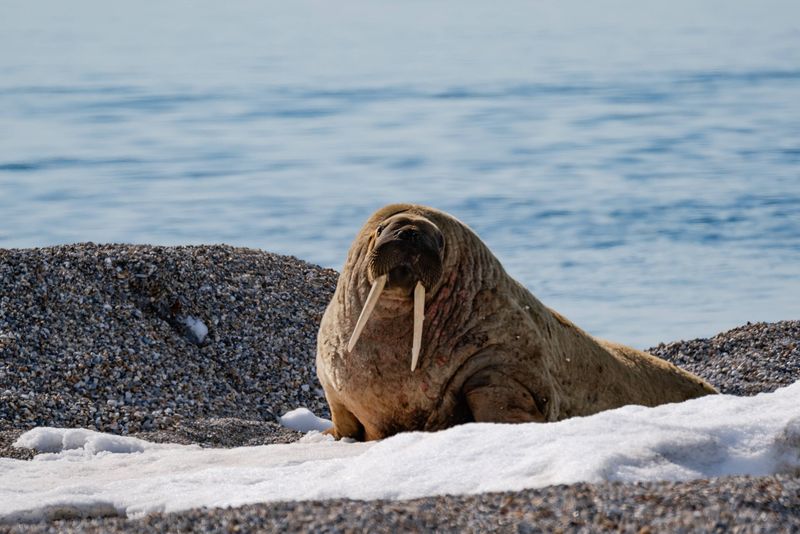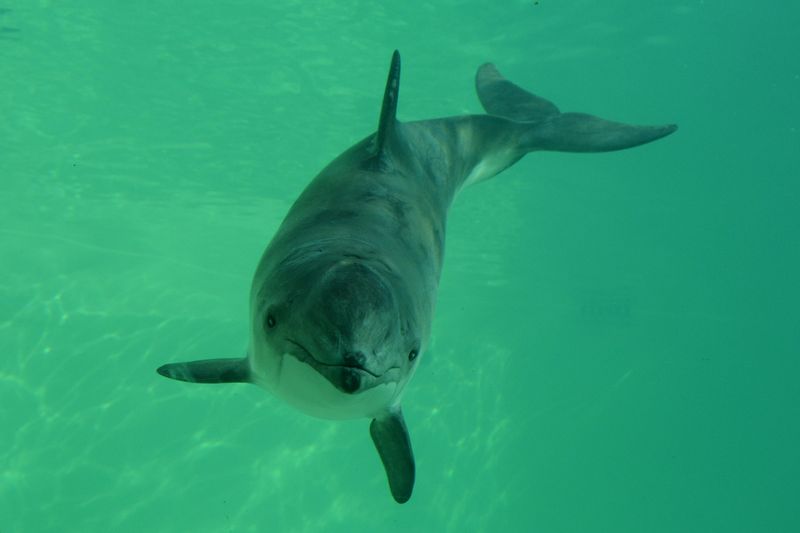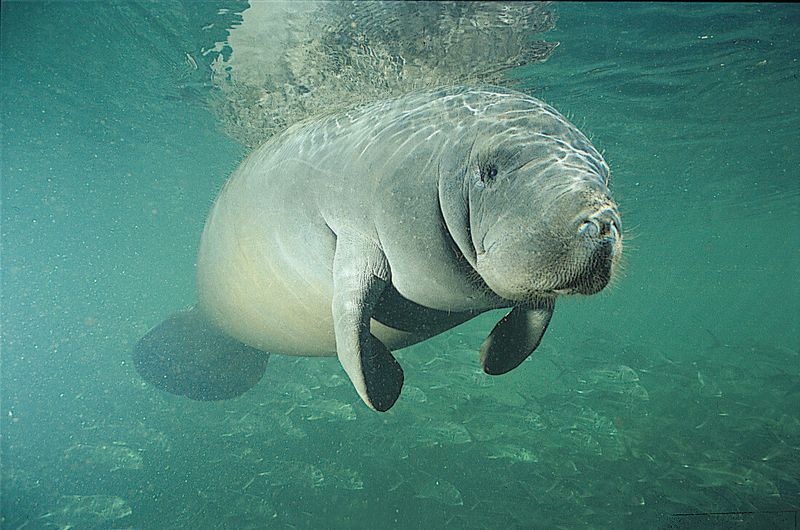📖 Table of Content:
When it comes to intelligent marine mammals, dolphins often steal the spotlight with their playful nature, problem-solving skills, and sophisticated communication methods.
Yet, the vast ocean is teeming with other remarkable creatures whose intelligence rivals, and sometimes even surpasses, that of dolphins. From strategic hunters to empathetic caretakers, these marine mammals showcase a fascinating range of cognitive abilities and social behaviors that are often overlooked.
This list dives into the world of these unsung ocean geniuses, shedding light on their unique traits, adaptive skills, and the scientific discoveries that continue to amaze researchers. Join us as we uncover why these incredible animals deserve just as much recognition for their intellect and complex lifestyles.
1. Orcas (Killer Whales)
Orcas, also known as killer whales, are renowned for their highly developed social structures and hunting techniques. These marine giants are apex predators, known to work in pods to execute complex hunting strategies.
They communicate using a variety of vocalizations, and each pod has its own dialect, much like human tribes.
Orcas are also known for their problem-solving skills and ability to imitate human actions. For example, they have been observed deliberately creating waves to knock seals off ice floes.
Their intelligence is further highlighted by their ability to learn new hunting strategies from other pods, showcasing a capacity for cultural learning.
In addition to their hunting prowess, orcas exhibit emotional complexity, including grief and playfulness, proving that their intelligence extends beyond mere survival skills. These magnificent creatures are a testament to the rich cognitive life present in the marine world.
2. Beluga Whales
Beluga whales, often called the “canaries of the sea,” are known for their extensive vocalization abilities. Their communication skills are among the most advanced in the marine world, with a wide range of clicks, whistles, and clangs. This vocal dexterity allows them to navigate under the ice and find breathing holes.
These whales also exhibit a high degree of social interaction and cooperation, living in groups called pods. They are known to assist injured or sick members of their group, demonstrating empathy and social bonding.
Belugas are also playful and curious, often seen interacting with their environment and exploring new objects. Their cognitive abilities are further evidenced by their capacity to learn from humans, such as mimicking sounds and understanding simple commands.
This adaptability reflects their intelligence and highlights the importance of social learning in their natural habitats.
3. Sperm Whales
Sperm whales possess the largest brain of any creature on Earth, which correlates with their complex social structures and behaviors. These deep-sea divers are known for their use of echolocation to hunt squid in the ocean depths, showcasing remarkable navigational skills.
Their social life is organized into matriarchal units, where females and calves form close-knit groups. These units communicate through a series of clicks known as codas, which vary from clan to clan, indicating a rich cultural diversity.
Sperm whales demonstrate problem-solving abilities and long-term memory, often avoiding areas where they’ve previously encountered threats like whaling.
Their intelligence is not just in their hunting or communication skills but also in their ability to adapt and learn from their experiences, making them one of the ocean’s most intelligent inhabitants.
4. Humpback Whales
Humpback whales are famous for their complex songs, which are unique to each population and can last for hours. These songs are believed to play a role in mating rituals, but they also indicate a high level of cognitive function related to learning and memory.
These whales are also known for their cooperative hunting technique called bubble net feeding. During this process, a group of humpbacks will circle around a school of fish and release bubbles to create a net, driving the fish into a tight ball.
Humpbacks’ ability to collaborate and communicate during hunting reflects their intelligence, as does their migratory behavior, which involves long-distance travel and precise navigation. Their songs, social structures, and feeding strategies all highlight the sophisticated cognitive abilities of these gentle giants.
5. Sea Otters
Although not technically a whale, sea otters are marine mammals with impressive intelligence. Known for their use of tools, they are one of the few animal species that use rocks to crack open shellfish, showcasing problem-solving skills.
Sea otters have a significant impact on their ecosystem, helping to maintain kelp forests by preying on sea urchins, which can otherwise overgraze these vital habitats. Their role as a keystone species highlights their ecological importance.
These playful creatures are also known for their social behaviors and grooming rituals. They often wrap themselves in kelp to anchor themselves while resting, demonstrating an understanding of their environment.
Sea otters’ intelligence is apparent not only in their tool use and ecological role but also in their social interactions and adaptability to changing environments.
6. Pilot Whales
Pilot whales are social creatures that live in tight-knit family groups, exhibiting strong social bonds and complex interactions. They are known for their emotional intelligence, particularly their capacity for empathy and altruism.
These whales communicate using a variety of clicks and whistles, similar to dolphins, and are capable of coordinating their movements during hunting. Their ability to work together is crucial for their survival and speaks to their advanced cognitive abilities.
Pilot whales have been observed engaging in mourning behaviors when a member of their pod dies, highlighting their emotional depth. This intelligence extends beyond their social structures to include problem-solving skills, such as navigating the open ocean and avoiding predators.
Their rich social life and emotional connections make them one of the ocean’s most intelligent and empathetic mammals.
7. Narwhals
Narwhals, known for their distinct spiral tusks, are enigmatic creatures of the Arctic. These tusks are believed to play a role in social interactions and possibly in sensing environmental changes.
Narwhals have a complex vocal communication system, using clicks, whistles, and knocks to navigate and hunt in their icy habitats. Their echolocation abilities are finely tuned, allowing them to thrive in the challenging Arctic environment.
These whales form close social bonds, often traveling in groups and displaying coordinated behavior. Their intelligence is apparent in their ability to adapt to the harsh Arctic climate, using their tusks and vocalizations to communicate and survive.
Narwhals’ unique biology and social behaviors highlight their cognitive capabilities and the intricate balance of life in polar oceans.
8. Walruses
Walruses are social, intelligent marine mammals known for their strong family ties and group behaviors. Their large tusks are used not only for defense and dominance displays but also for climbing out of the water onto ice and rocky shores.
These animals communicate through a range of vocalizations and physical gestures, indicating a complex social structure. They often engage in playful behaviors, such as play fighting, which strengthens social bonds within their groups.
Walruses are also known for their memory and learning abilities, often returning to the same haul-out sites year after year. Their social intelligence, coupled with their ability to adapt to their environment, underscores their cognitive complexity.
Walruses’ unique adaptations and group dynamics make them fascinating inhabitants of the marine world.
9. Gray Whales
Gray whales are known for their impressive migratory journeys, traveling thousands of miles between feeding and breeding grounds. This migration requires excellent navigation skills and long-term memory, traits indicative of their intelligence.
They are also known for their curiosity and interaction with humans, often approaching boats and engaging in “friendly” behaviors. This curiosity suggests an advanced level of social intelligence and a willingness to explore new stimuli.
Gray whales feed on bottom-dwelling organisms, using their baleen to sift through sediment. This feeding strategy is not only unique but also demonstrates problem-solving abilities and adaptability.
Their intelligence is showcased in their migratory behavior, feeding techniques, and social interactions, making them remarkable marine mammals.
10. Harbor Porpoises
Harbor porpoises are small cetaceans known for their shy nature and quick movements. Despite their elusive behavior, they exhibit significant intelligence, particularly in their echolocation and hunting skills.
They communicate using ultrasonic clicks, which are used for navigation and to locate prey. Their ability to hunt efficiently in murky waters indicates a high level of sensory intelligence and adaptability.
Harbor porpoises often remain close to coastal areas, where they can be affected by human activities. Their intelligence is also evident in their avoidance strategies and ability to navigate through busy waterways.
These adaptable creatures demonstrate the diverse cognitive abilities required to thrive in complex marine environments, reflecting their intelligence and resilience.
11. Manatees
Manatees, often referred to as sea cows, are gentle herbivores that inhabit warm coastal waters and rivers. Their intelligence is demonstrated in their problem-solving skills and adaptability in various habitats.
These creatures have a keen sense of touch, using their sensitive whiskers to explore their environment and find food. Manatees are also known to learn from their experiences, such as avoiding boat propellers after negative encounters.
Manatees communicate through a series of squeaks and chirps, particularly between mothers and calves. This communication is crucial for social bonding and indicates a level of emotional intelligence.
Their gentle nature and adaptability highlight their intellectual capabilities, making them unique and intelligent inhabitants of marine ecosystems.
